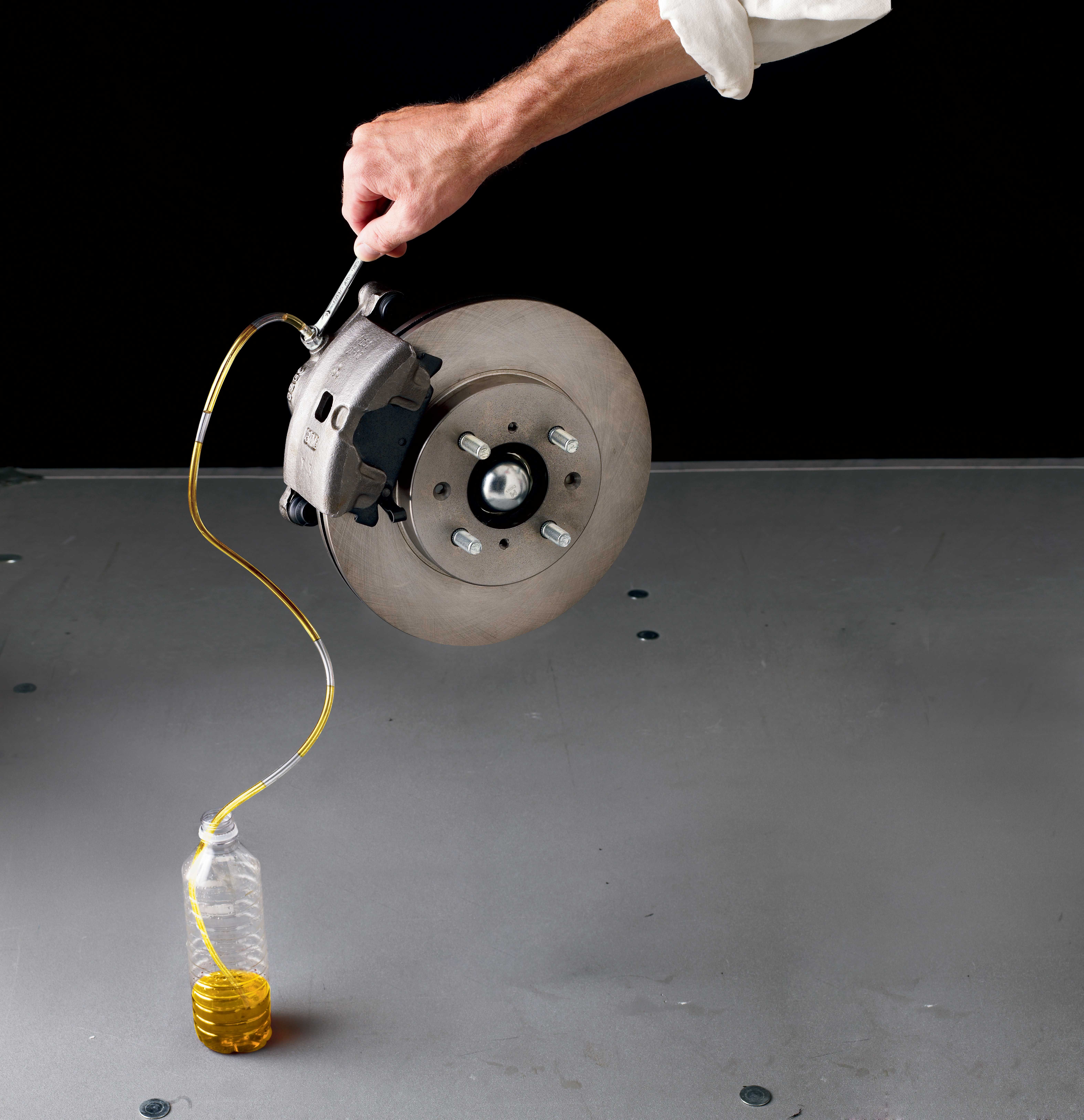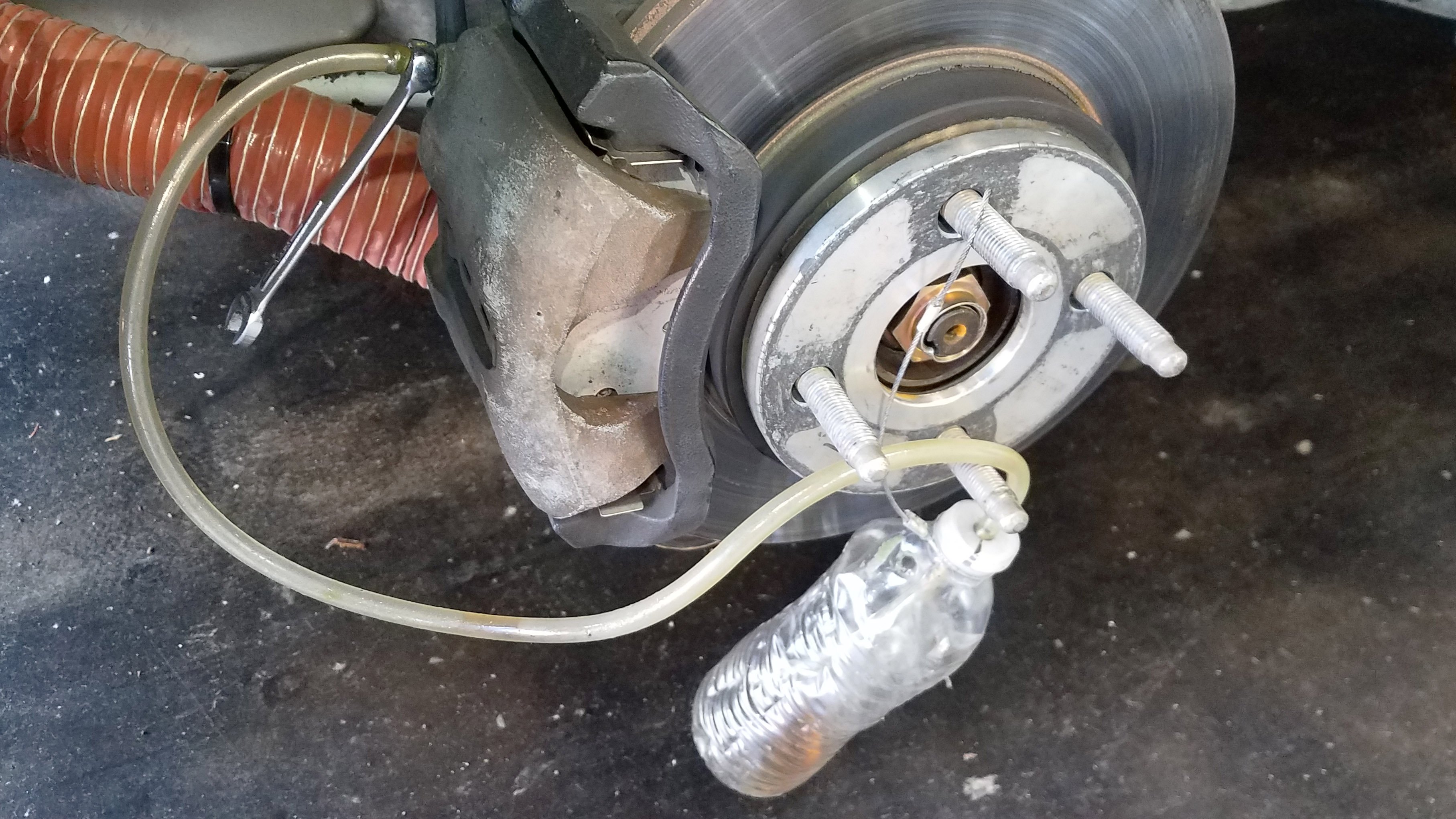
Take off any hubcaps and raise the car and. Open the hood and secure it.

Cars with automatic transmissions should be in park and those with standard.
How to bleed brake lines. Confirm you need to bleed the brake lines. The sinking brake pedal often does mean the brake lines need to be bled. Position your car on a flat surface.
Cars with automatic transmissions should be in park and those with standard. Take off any hubcaps and raise the car and. 5 ways to bleed your brakes.
Get the air out Gravity is good. Gravity is the simplest one-person brake bleeding method. Attach the hose to the bleed screw open it.
For whatever reason gravity doesnt always take hold and the two-person method can pick up where. How to Bleed Your Brakes 1 Find the little nozzle called a brake bleeder screw thats located behind each of your brakes. 2 Pick the proper wrench or socket that fits the screw and loosen the screw.
Special wrenches called bleeder wrenches. 3 Place a small piece of. To properly bleed the brakes start by acquiring about sixteen ounces of fresh brake fluid.
An unopened can has a long shelf life but an opened can should be discarded within a few weeks. One person brake bleeding method used to purge air from brake lines. I use the same method in this video where we replace a brake caliper.
Not only did I not know how to bleed the brakes I didnt even know what the term meant. Leave it to dad to fill in the knowledge gap. After a quick brake bleed the Festiva was back on the road brakes fully functional.
How To Bleed Your Brakes. The process of bleeding brakes purges all air out of the brake fluid system. Its a pretty.
You connect the tubing from the vacuum pump to the brake bleed screw via the tubing provided in the kit. You open the bleed valve and pull the fluid from the reservoir down to the brake caliper with a few pumps. The trick is to be sure you keep the fluid level in the reservoir high enough.
Dont run low or out and pull air in with the fluid. When the brake fluid in the reservoir drops air that fills up the remaining section may find its way on the brake lines and continued accumulation may result in the spongy feeling you feel on the pedal. How to bleed ABS module without scan tool sounds so complicated but regardless of the type of car you are driving the steps.
Take a plastic tube of around 18 inches and attach it to the nipple of the first bleeder. If you are done with the first one repeat the same process for the other bleeders. Take a jar and insert a hole into the cap.
Attach the other end of the tube onto the lid and make sure there are no leakages. How to Bleed Brake Fluid One-Person Bleed Safety First. Park your vehicle on a flat dry surface and install wheel chocks.
Open the hood and secure it. Remove the old brake fluid. Uncap the master cylinder and use the vacuum pump or turkey baster to remove most of the old.
There are only two methods left. The first is to use one of the pricey brake bleeding tools that literally pumps brake fluid backwards through the system to force the air bubble into the brake fluid reservoir. Get that special bleeder kit on ebay below.
Then use a tank of pressurized brake fluid at the master cylinder to push the fluid and air through the system and out into the container. Vacuum For this method attach a vacuum bleeder to the bleeder screw after you open it. It draws the fluid and air out and into an attached container.
To bleed the EBC4 system use the following steps. Bleed the master cylinder before the BPMV Brake Pressure Modulation Valve. The master cylinder can be bled through the brake lines.
Loosen the line fitting at the secondary outlet and depress the brake pedal no more than 13 the distance. Bleeding Each of the Car Brake Lines 1. Jack up your car when youre ready to start.
Getting the car off the ground will give you easier access to the. Put a 1 by 4 in 25 by 102 mm piece of lumber under the brake pedal. You can use an alternative spacer if necessary.
Hook a tube to the. The amount of time you leave the bleeder open may vary but a general rule of thumb is to let it bleed until the fluid runs clear and free of bubbles. Re-tighten and repeat this step at each wheel.
Before test-driving check the pedal it should feel firm when depressed and it should hold constant pressure without dropping. Consult your owners manual to see which specific type of brake fluid your vehicle requires. Its also good to.
Jack up your vehicle on level solid ground preferably a garage floor or driveway and support it with four. Locate each of the four caliper bleeding screws.